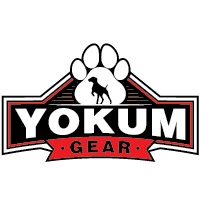Ensuring the safety and comfort of your furry friend is a top priority for pet owners. One critical component of pet safety during walks, hikes, and car rides is the dog harness. However, with numerous options available in the market, selecting the right one can be overwhelming. This guide will help you understand what to look for in a secure dog harness, ensuring you make a choice that's beneficial for your dog.
Importance of a Secure Dog Harness
A secure dog harness is essential for several reasons. Firstly, it distributes pressure evenly across the dog's body, reducing the risk of injury compared to a collar. This is particularly important for breeds prone to tracheal collapse or those with delicate neck structures. Secondly, harnesses provide better control, especially for energetic or larger dogs, making walks safer for both the pet and owner. Lastly, a well-fitted harness can prevent escapes, ensuring your dog remains safe during outdoor adventures.
Key Features to Look For
1. Proper Fit and Adjustability
One of the most important aspects of a harness is its fit. An ill-fitting harness can cause chafing, discomfort, or even allow the dog to wiggle out. Look for harnesses that offer multiple adjustment points around the neck, chest, and back. To ensure the right fit, measure your dog’s girth (around the widest part of the ribcage) and refer to the manufacturer’s size chart.
2. Material and Durability
The material of the harness should be strong enough to withstand wear and tear but also comfortable for your dog to wear. Common materials include nylon, polyester, and leather. Some harnesses also feature padded sections to enhance comfort. Durability is crucial, especially for energetic dogs or those that pull on the leash. Check for sturdy buckles, reinforced stitching, and robust D-rings for leash attachment.
3. Escape-Proof Design
For dogs that are skilled escape artists, an escape-proof harness can provide peace of mind. Look for designs that feature multiple straps, secure buckles, and snug fits that your dog cannot easily slip out of. Some harnesses come with dual leash attachment points that add an extra layer of security.
4. Leash Attachment Points
Many harnesses offer front and back leash attachment points. Front-attaching harnesses (with the D-ring at the chest) can help reduce pulling, making walks more enjoyable. Back-attaching harnesses (with the D-ring on the back) are ideal for well-behaved walkers. Some harnesses even have dual attachment points, providing versatility based on your dog’s behavior and the activity.
5. Reflective Strips and Visibility
If you often walk your dog early in the morning or late at night, visibility is crucial for safety. Reflective strips or stitching on the harness can make your dog more visible in low-light conditions, reducing the risk of accidents. Some harnesses also feature bright, high-visibility colors.
Types of Dog Harnesses
1. Standard Harness
These harnesses typically come with a back clip for leash attachment and are suitable for well-trained dogs. They are straightforward to use and provide comfort for everyday walks.
2. No-Pull Harness
No-pull harnesses are designed to minimize pulling by redirecting the dog’s attention towards the owner when they try to pull. They usually feature a front clip attachment that causes the dog to turn slightly towards the owner, discouraging the pulling behavior.
3. Step-In Harness
Step-in harnesses are easy to put on and remove. The dog steps into the harness with its front legs, and the owner secures it around the torso. These are great for dogs that are uncomfortable with harnesses that go over the head.
4. Car Safety Harness
These harnesses are designed for use in vehicles, providing security and minimizing injury risks during sudden stops or accidents. They usually feature a tether that attaches to the car’s seatbelt system.
Evaluating Your Dog's Needs
When selecting a harness, consider your dog’s size, breed, age, and specific behavioral traits. Puppies benefit from lightweight, adjustable harnesses to accommodate their growing bodies. Brachycephalic breeds (like Pugs and Bulldogs) need harnesses that don’t pressure the neck. Larger, stronger breeds may require more robust, heavy-duty materials for durability and control.
Conclusion
Choosing the best secure dog harness involves careful consideration of several factors including fit, material, design, and your dog’s specific needs. By paying attention to these elements, you can ensure that your furry friend remains comfortable and secure during your adventures together. A well-chosen harness not only enhances the safety but also the joy of your shared experiences.

